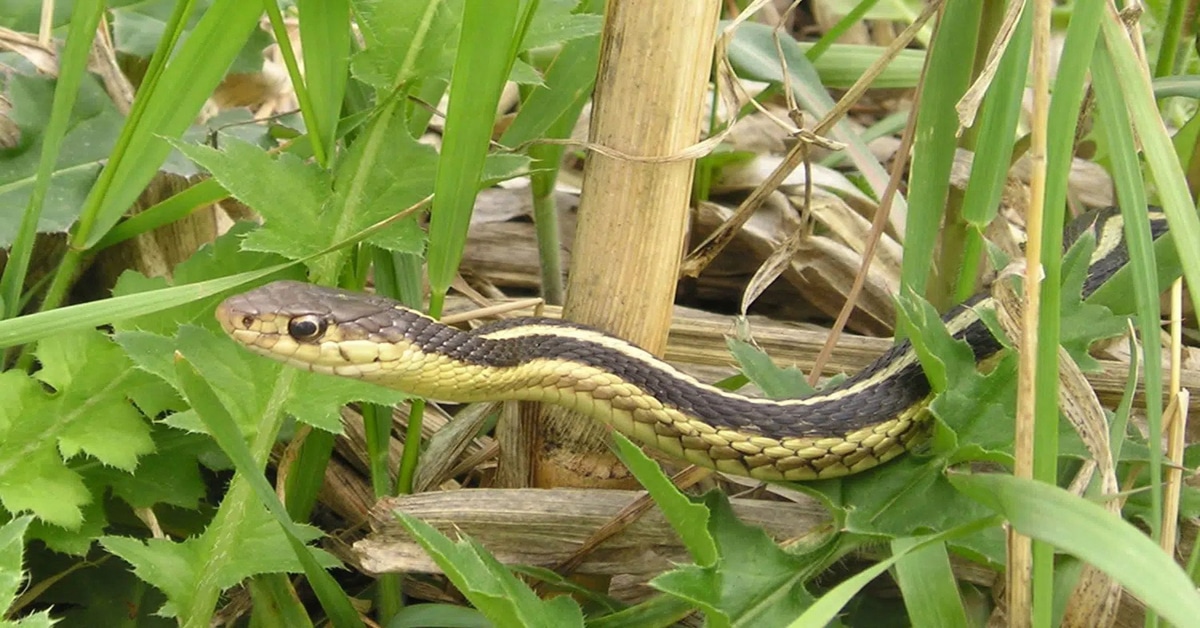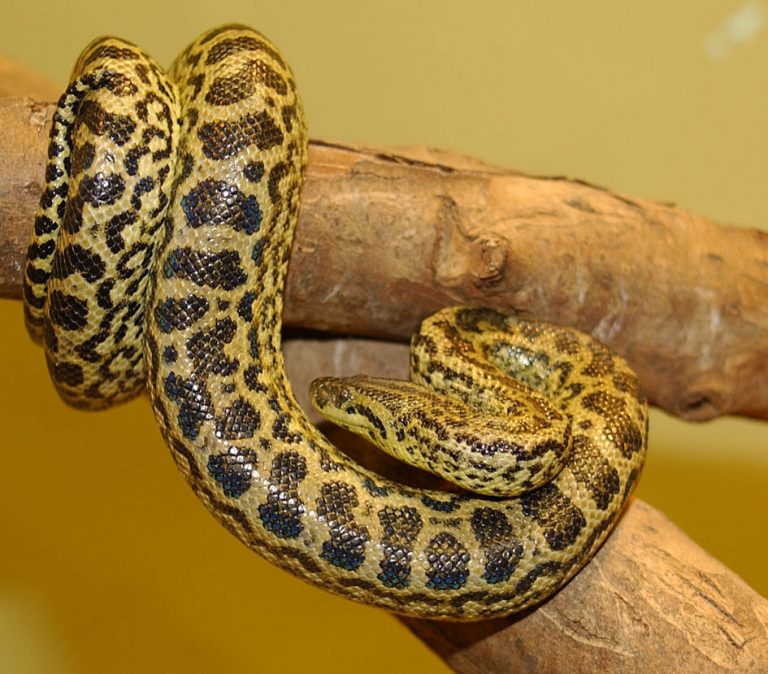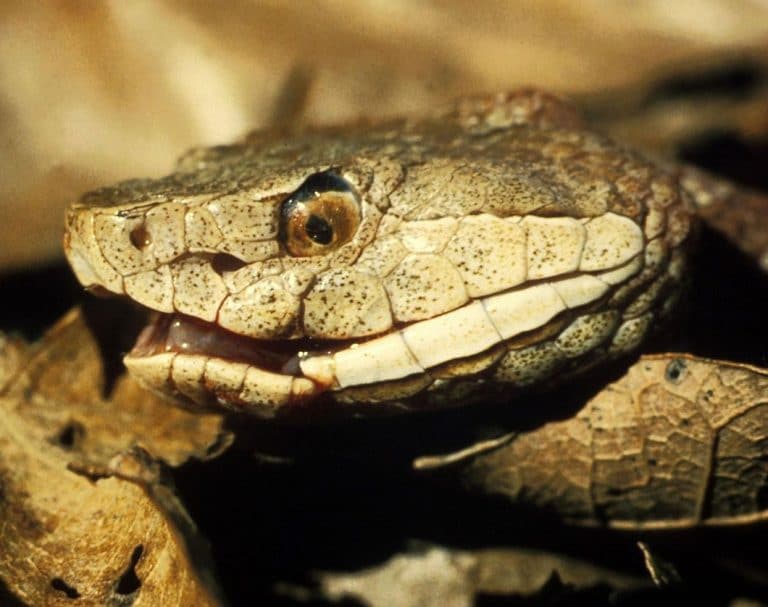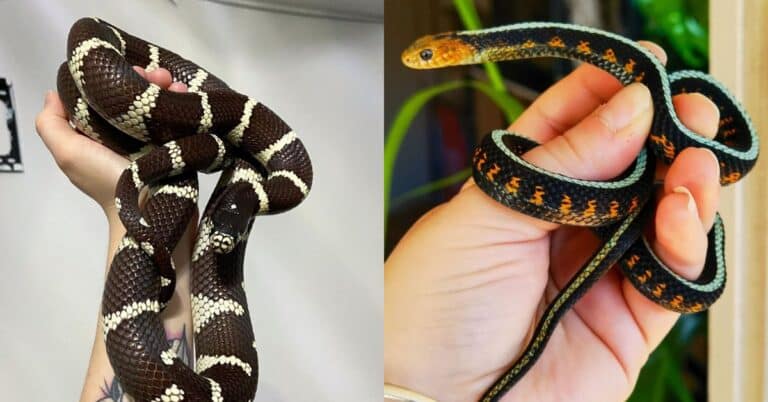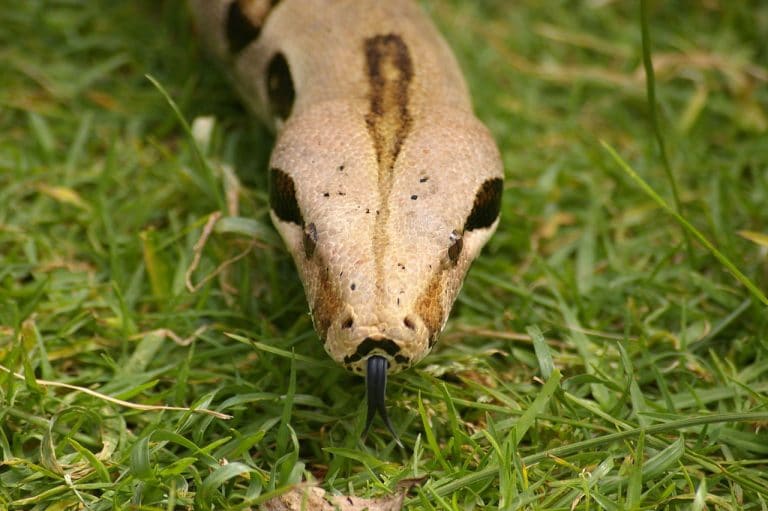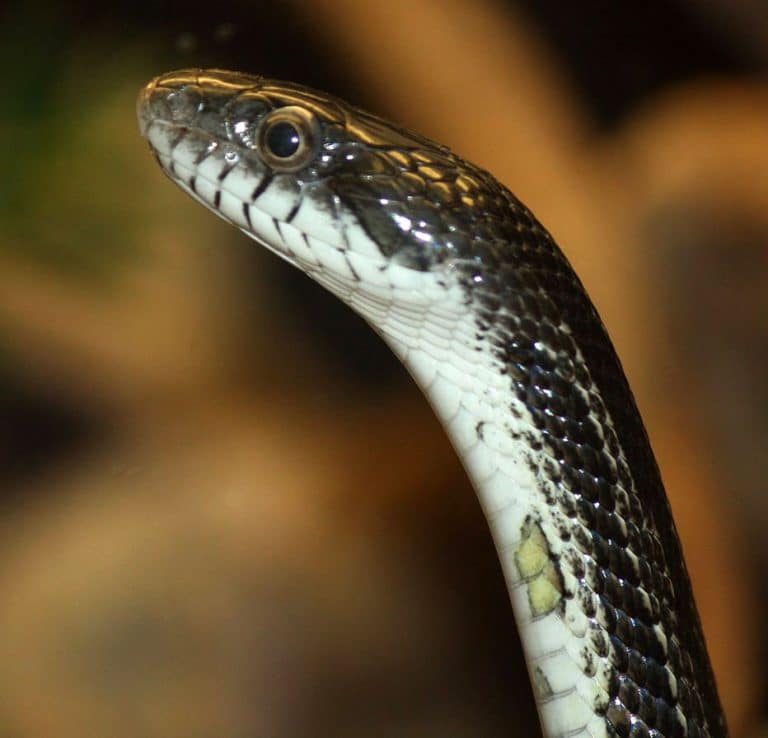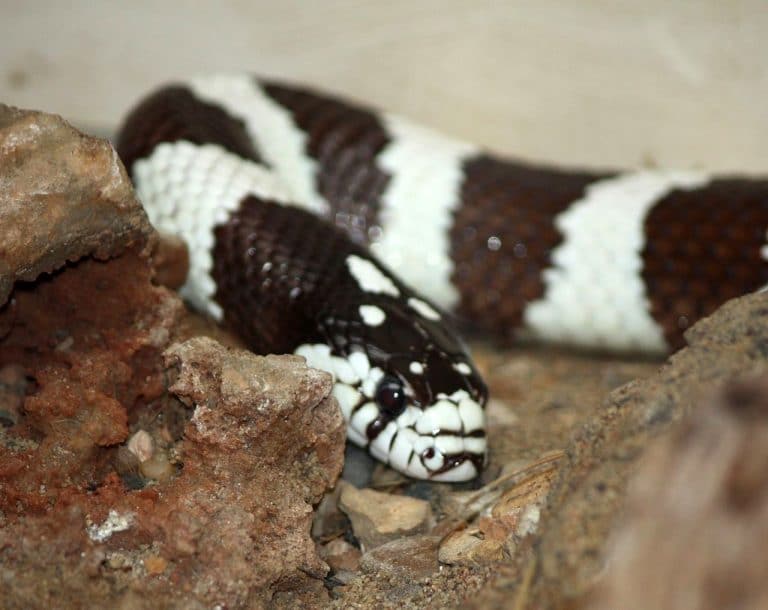Garden Snake – Fascinating Facts & Ways to Keep Them Away
Have you heard about garden snakes? This is a family of widespread, non-venomous snakes also referred to as garter snakes. Garden snakes live in a range of environments and, believe it or not, can be very useful in yards and gardens. However, there are several ways to keep garden snakes away from your garden.
Do you want to learn more about garden snakes, or are you experiencing problems dealing with them? Either way, reading this article will assist you in learning more about these fascinating animals.
What Do Garden Snakes Look Like?
It’s critical to be familiar with a garden snake’s appearance so that you won’t be confused or alarmed. What do garden snakes look like? There is no Pacific color pattern to the common garter snake, but it is extremely diverse.
This feature alone might not help you identify a garden snake, since garden snakes can have diverse color patterns, such as olive, orange, or red. They can also be black, brown, or green with yellow stripes. The snake’s back has a single stripe running down the middle, with the other lines flanking it. The average garden snake is between 22 and 54 inches long, including the tail.
Some of the garden snake species may also be without stripes, while others may have stripes that alternate with rows of dark spots. The head of a common garter snake is uniformly dark in color and larger than the neck. Their scales are keeled, and their tongues are red with a black tip.
When Are Garden Snakes Most Active?
Knowing when garden snakes are most active is also essential to being prepared for their visit. The weather determines whether they are active or not. In cooler climates or seasons, garden snakes are most active in the afternoons, while during the hot summer days, they can be most active in the early morning and late afternoon.
So, the garden snake is more active and interactive in warmer southern climates and typically rests in its typical dens in cooler weather. On warm winter afternoons, several snakes have been observed leaving their hibernaculum to take in the light.
Garden Snakes’ Habitat
What kind of environment is acceptable for garden snakes? As mentioned above, they can live in various environments since they are widely distributed, extremely adaptable, and tolerant of harsh environmental circumstances.
Places like meadows, marshes, wooded areas, and hillsides are just a few of the diverse places where common garter snakes can live comfortably. However, they often choose grassy, damp areas and use their perfect swimming skills and water to protect themselves if they feel threatened.
How Do Garden Snakes Reproduce?
Males reach sexual maturity at 1.5 years, while females do so at 2 years. As soon as they come out of hibernation in the spring, these snakes start mating. To avoid disturbing the females, the males left the den first. They are polygynandrous, meaning male and female garter snakes can have numerous partners at once.
They have their breeding seasons in the spring, right after they come out of hibernation, and in the fall. The female returns to her summer habitat to feed and find a suitable birthplace after selecting her mate or mates. The men remain, though, to mate again with other available females. An interesting thing is that a female garden snake may not mate if she cannot locate a suitable partner because females can retain the male’s sperm until it is required.
Female garden snakes raise their young within their bodies until birth. The mother doesn’t lay eggs but gives birth to live young, called snakelets, which is not usual among all snakes. Newly born snakes usually stay around their mother; however, the mother provides no parental care or protection after they are born.
What Do Garden Snakes Eat?
In the first place, garden snakes will visit your garden or yard in search of proper food, water, or refuge. As mentioned before, garden snakes frequently congregate near water sources for the same reason.
The diet of garden snakes is pretty diverse. They can eat small fish, earthworms, lizards, amphibians, birds, and snails. Rodents can also be among the prey items eaten by garden snakes, meaning that they can also protect your garden from damage.
Are Garden Snakes Beneficial?
The menu of garter snakes mostly contains creatures that are the enemy of your healthy and good-looking garden. Crickets, snails, ants, earthworms, and even rats offer natural pest control!
Therefore, if you want to maintain the health of your garden or yard, let these snakes alone, and they will do the same for you. Garden snakes are generally more terrified of you than you are of them, so they will avoid people, pets, and places where they may be seen.
Are Garden Snakes Venomous?
Years before, people were mistaken and thought garden snakes were non-venomous species. However, they may not be as dangerous as other venomous snake species, but it’s known that their bites release a moderately neurotoxic venom, which in some people might trigger an anaphylactic reaction.
Despite this, because their bites contain much less venom than those of other poisonous snakes, a bite from a human is not harmful, though it could still cause mild itchiness, burning, or swelling.
The same cannot be said for amphibians and other small creatures. When touched or injured, common garter snakes have been known to release a foul-smelling substance from their postanal glands that may easily poison small creatures.
How to Keep Garden Snakes Away?
Garden snakes can be very aggressive, especially toward pets. If you see one in your garden, you must not try to touch or catch it. Always remember to avoid any kind of damage. It’s better to have at least three feet of space between you and the garter snake. Otherwise, they will feel threatened and start defending themselves.
If you live in an environment where garter snakes are not rare, we advise you always to have a snake repellent close by. You’ll be able to spray the snake until it goes away. Here are some other suggestions on how you can protect yourself and your garden from garden snakes.
Proper Fencing of Your Garden
If you’ve spotted snakes getting into your yard or garden, installing snake-proof fencing might be one of the first things you want to think about doing. Typically composed of vinyl or hardware cloth, snake-proof fencing has a mesh that is too narrow for snakes to pass through.
Snakes need to be kept from climbing the fence, so it needs to be installed properly. You may always get in touch with an expert to help you install the fence properly if you’re unsure how to proceed.
Using Snake Repellents
Snakes possess keen senses of smell that might be used against them. Why not use snake repellents to keep snakes away from your garden or yard? Numerous commercial snake repellents are thought to be efficient and may help you reach your goal easily. Using natural items is also recommended; you can make your own snake repellent, though.
Snakes won’t even dare to approach repellents because of how bad they smell.
Grass Control
The best you can do is to make your yard or garden an uncomfortable place for garden snakes to live or even pass. That’s why you should maintain a short-grass area in your garden. Since garden snakes prefer grassy places, they’ll start looking for them elsewhere. Another positive side is that hawks and other predators will have access to snakes.
Additionally, it will be simpler for you to find them. Do not overwater the grass since this will attract worms, frogs, and snakes. Snakes are naturally repelled by plants like marigolds, wormwood, and lemongrass. It will also assist if you plant some near your home.
Garden Damage Monitoring
For hiding places, fissures, or holes, search the exterior of your house as well as the yard or garden. Remove any places like this that may surround your home because snakes can readily hide there. Bird feeders can also be dangerous as they attract rodents, and snakes will come shortly after looking for prey.
Scientific Classification
| Kingdom: | Animalia |
| Phylum: | Chordata |
| Subphylum: | Vertebrata |
| Class: | Reptilia |
| Order: | Squamata |
| Suborder: | Serpentes |
| Family: | Colubridae |
| Subfamily: | Natricinae |
| Genus: | Thamnophis |
Garden Snakes are quite common in areas of North America and there exist many varieties and subspecies of these snakes. They are all thin and possess long stripes on their bodies which run along with their spine, in the very middle, or they might have a stripe usually running along the side or the length of the body.
The most commonly known Garden Snakes are the non-poisonous ones you know as the Eastern Garter Snake. This species is very common and you can find them throughout the entire America. They can probably live in every possible climate and do not require much of maintenance.
They love marshy lands which include areas having ponds, wetlands, forests, fields and even your own personal garden. Since they are really small, they are able to squeeze in and can easily defy the naked eyes of the human. But there is nothing to worry about because they will not harm you if you do not harm them.
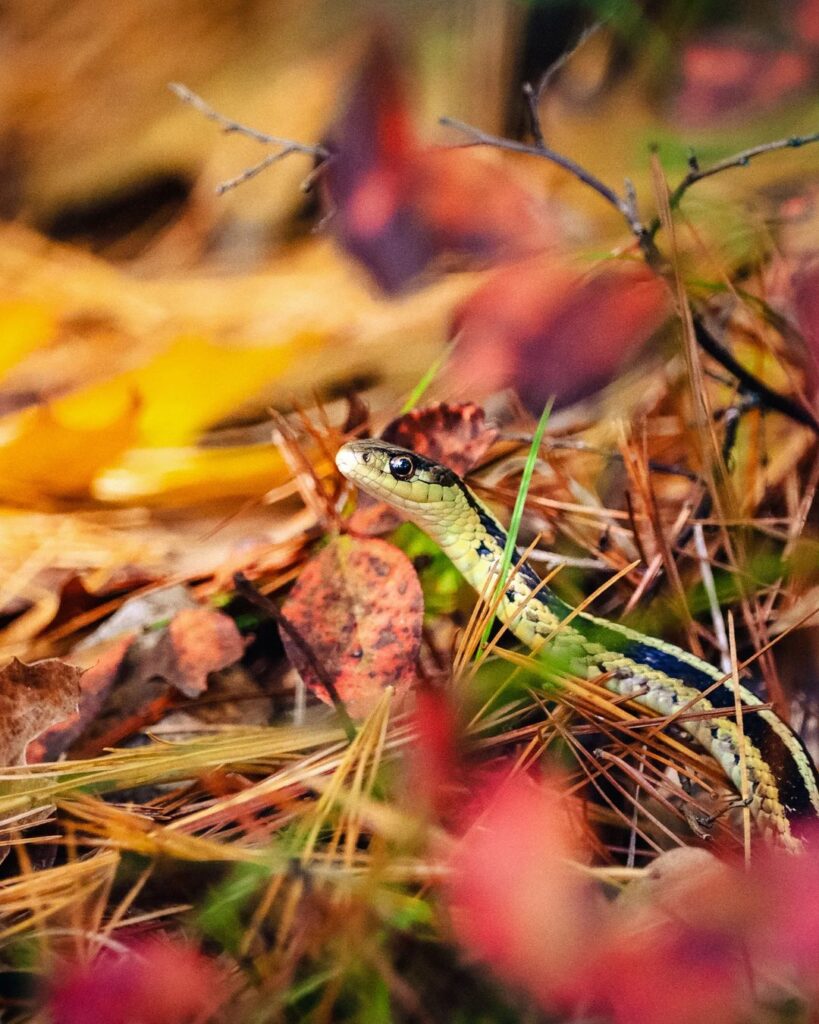
Anatomy
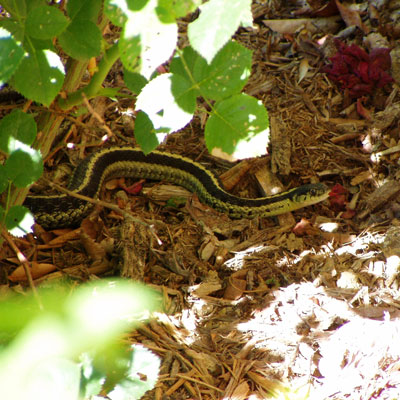
Such species of snakes are usually 2 to 3 feet long, but there have been times when one has seen such a snake to have grown to a size of around 4 feet. The Garden snakes have quite the similar biology as the majority of the snakes that can be found along the North America. The color of a garden snake is usually very dark and earthy which might have a tan or even red, yellow or green stripes running down the middle part of its body.
To many, the rattlesnakes resemble the garden snakes a lot, but the major difference between them being that a Garden snake is much smaller and thinner than the rattlesnake; their color/ body patterns are also completely different. They are unlike a rattlesnake that never have stripes on their body; the head is not broad and the garden snake’s tail does not rattle. So basically a garden snake looks nothing like those poisonous kinds snakes available around the world.
Habitat
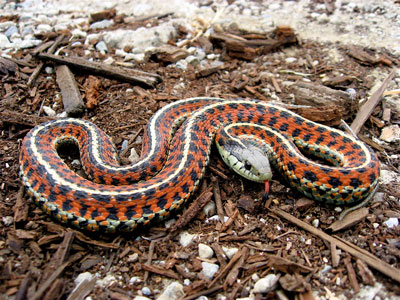
Garden snakes are very common throughout the North America and it is also available throughout the world. They are easily spotted in the United States area and one can easily say that it is the most common sort of snake available around the world. It is very hard to pinpoint the exact sort of environment that a garden snake prefers as they tend to love a variety of environments.
You can usually define Garter snakes as small and very quick non-poisonous creatures. They have a great reputation as the great escape artists. Since they are very tiny in form, they can easily escape through any small hole or opening. They are easily scared and become very rough to handle at the very beginning, but with time, they change their attitude and tend to relax a bit more. Like any other snakes, Garter snake too will secrete a smelly liquid from their cloaca when they are threatened and will coil back or really strike.
As a Pet
Breeding
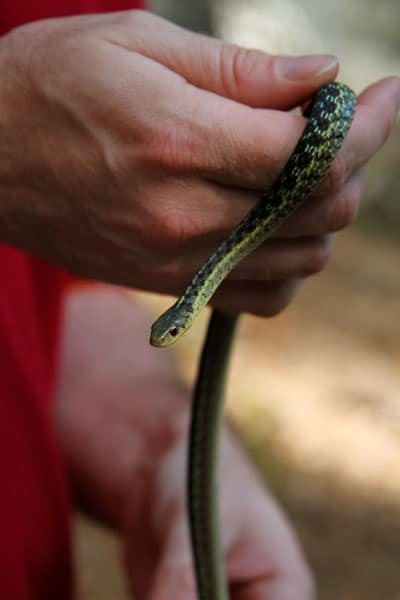
Garden snakes, before mating, enter into a stage called brumation. This is the phase, where they will usually stop eating for around two weeks, so that their stomach is completely empty and they keep it clean and clear for their mating purposes. The male snakes will often finish their brumation first and patiently wait for their female partners to be done with their process.
Once they have completed this part, the males will tend to mate with as many females as they are able. It only takes around two or three months for the baby snake to be born and the time depends on the number of snakes being born at the same time. The range may vary from around 3 to 80 snakes being born at one single go. At the very birth, the baby snake will start its life independent of their mother. The record for the maximum number of snakes born at the same time in a liter stands at 98.
Housing
You should arrange a cage that is neither too large or too small for your pet snake. Because, if the cage is too large they will feel exposed and absolutely insecure. While again, if the cage is too small, it will not get the required amount of space and this will adversely affect their health. The best way to calculate the size of the cage is to make sure that the length plus the width of the cage is more or less lager than the total length of the snake itself.
You must ensure that the cages are absolutely leakproof and devoid of any sorts of holes. The lids on the other hand, must be very secure because, believe it or not, a snake as tiny as that can push off any lid in an attempt to escape. Now, these snakes might not have the muscle strength as that of a boa or any other heavy snakes, but they have their tricks and that make them great escape artists.
Food
Unless you acquire a garter snake that lives on mice and take in enough protein, you need to really provide the pet with a varied range of diet. Mice have enough nutrition for a snake to survive, but a snake must have enough of every sort of nutrition available for them to live a healthy life. You can feed a young garter snake with a combination of earthworms, appropriately sized, so that the snake is able to eat them with convenience. You can even give the snake a good meal of fish fillet, which will somewhat suffice.
Handling
Garter snakes are usually very docile in nature and do not mind being handled. All you would need to do is pick them up and they will do the rest of the ‘exploring’.
Final Thoughts
Garden snakes come in a variety of appearances that mostly depend on their habitat. There is no need to kill these snakes because they are non-venomous and can barely be dangerous to humans. The interesting thing about them is that garden snake offspring are born alive, not in eggs to hatch, in contrast to certain other snake species.
It’s always best to avoid any contact with a snake. If you are afraid, have no experience with snakes, don’t know what kind of snake it is, and the repellent is not effective, you should call for immediate assistance.
While remaining out of the way of you and your dogs, they can be beneficial as well. They can help your yard and garden by keeping other creepy crawlies at bay. Use the above-mentioned suggestions to effectively remove them from your lovely garden.

Nato is a content writer and researcher with a background in psychology who’s eager to explore the wonders of nature. As a travel enthusiast and animal lover, she hopes to inspire others to discover and cherish the beauty and importance of the natural world.

